Soft matrix promotes immunosuppression in tumor-resident immune cells via COX-FGF2 signaling
- PMID: 40425576
- PMCID: PMC12116891
- DOI: 10.1038/s41467-025-60092-x
Soft matrix promotes immunosuppression in tumor-resident immune cells via COX-FGF2 signaling
Abstract
Mechanical forces of the tumor microenvironment change dynamically during key events of tumorigenesis such as invasion and metastasis. These changes in compressive forces often affect the breast cancer cell phenotype. However, it is lesser known how these dynamic mechanical forces in the tumor microenvironment affect the phenotypes of tumor infiltrated leukocytes (TIL) and their subsequent anticancer activities. Here we find, in primary patient-derived explant cultures (PDEC) containing resident TILs, that low compression promotes a change in the original identity of breast cancer cells from luminal to a more mesenchymal and undifferentiated state. These altered tumor cells induce an upregulation of immunosuppressive cytokines such as interleukin-10 (IL-10) and Transforming Growth Factor Beta (TGF-β), as well as polarization of macrophages towards pro-tumor M2(Gc)-type and depletion of CD8+ effector memory T-cells. These immunosuppressive events are mediated by tumor cell derived fibroblast growth factor 2 (FGF2) and prostaglandin E2 (PGE2). We also find that FGF2 rich areas in primary tumors show enrichment in M2-like-macrophages and diminished numbers of CD8 + T and B-cells. Our results suggest that low compressive forces in the tumor microenvironment induce local immunosuppression via FGF2 secretion arising from phenotypic plasticity of tumor cells.
© 2025. The Author(s).
Conflict of interest statement
Competing interests: The authors declare no competing interests.
Figures
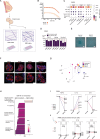
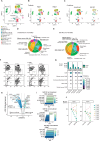
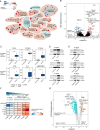
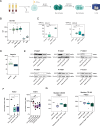
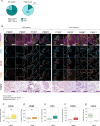
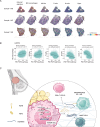
References
-
- Mohammadi, H. & Sahai, E. Mechanisms and impact of altered tumour mechanics. Nat. Cell Biol.20, 766–774 (2018). - PubMed
-
- Leight, J. L., Drain, A. P. & Weaver, V. M. Extracellular Matrix Remodeling and Stiffening Modulate Tumor Phenotype and Treatment Response. Annu. Rev. Cancer Biol.1, 313–334 (2017).
MeSH terms
Substances
LinkOut - more resources
Full Text Sources
Medical
Research Materials
Miscellaneous

